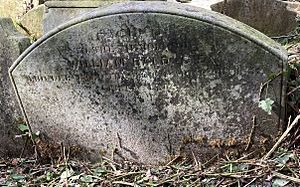William Bald facts for kids
Quick facts for kids
William Bald
|
|
|---|---|
| Born | c. 1789 Burntisland, Fife, Scotland
|
| Died | 1857 London, England
|
| Nationality | Scottish |
| Occupation | Engineer |
| Engineering career | |
| Discipline | Civil Mining Cartography |
| Institutions | Royal Society of Edinburgh Royal Irish Academy Geological Society of London Institution of Civil Engineers Societe de Geographie |
| Projects | Map of Maritime County of Mayo Antrim Coast Road< Clyde River improvements |
William Bald (born around 1789, died March 1857) was a Scottish expert. He was a surveyor, which means he measured land. He was also a cartographer, meaning he made maps. And he was a civil engineer, designing and building things like roads and bridges.
William was the cousin of Robert Bald, who was also a surveyor and mining engineer.
Contents
Early Life and Map-Making Skills
William Bald was born in Burntisland, Scotland, in 1789. He left school there when he was 12 years old. After a short time studying in Edinburgh, he started working for John Ainslie in 1803. This was a great start because Ainslie was the best map-maker in Scotland at that time.
Back then, many Scottish landowners needed maps. They wanted to develop their land and make more money from it. William Bald worked on these projects, learning from Ainslie. By the age of 17, William was trusted to map the Western Isles of Scotland all by himself. The maps he created changed how these islands looked in new atlases.
Working in Ireland
Around 1809, William Bald moved to Ireland. When he was 21, he began some of his most important work there. By 1815, he was living in Castlebar, County Mayo, and called himself a Land Surveyor. Most of his major mapping, surveying, and engineering projects happened in Ireland. He is still remembered there today for his work.
William Bald helped build and improve roads, harbors, and railways across Ireland. He was in charge of mapping County Mayo. In 1830, he finished a huge 25-sheet map of the county. This map is still seen as a masterpiece.
Famous Road Projects
From 1826 to 1830, Bald worked in France. After that, he returned to Ireland. He improved the River Boyne and the harbor at Drogheda. He also built Ireland's first suspension bridge in Kenmare, County Kerry.
But his most famous project is the Antrim Coast Road. Many people think it's one of Ireland's most beautiful drives. He built this 40-kilometer (about 25-mile) road between Larne and Cushendall. It took him from 1832 to 1842 to complete.
William Bald had a clever idea for the road. He wanted to build it right at the foot of tall cliffs, some over 100 meters high. This was a new idea. Earlier plans suggested building the road further inland. But that would have meant very steep hills as the road crossed valleys. Bald decided to blast parts of the cliff face. The broken rock then fell onto the shore, creating a base for the new road.
Cavehill Railway
In 1834, Bald had another idea. He wanted to open a limestone quarry on Cavehill, near Belfast. He planned to transport the stone to Belfast Harbour using a railway. He thought it would cost about £12,000 to build. But he believed it would make around £2,300 each year.
A company called the Cavehill Railway and Quarries was formed. Bald built a double-track tram road for them. Horses and gravity helped move the stone. The track crossed the Ballysillan Road under a bridge. It also went over the Antrim Road and down to the port. This company operated until 1896.
Work in Scotland and Later Life
In 1839, William Bald became an engineer for the Clyde River Trust in Scotland. He worked on making the river deeper and better for ships. He also redesigned Troon harbor. After six years, he left due to disagreements.
He then returned to work in France. At the same time, he advised the British Admiralty as a consultant engineer.
William Bald was a creative and smart civil engineer. His work was highly respected in all the countries where he worked. He was a member of important groups like the Institution of Civil Engineers and the Royal Society of Edinburgh. In 1816, he joined the Geological Society of London. In 1822, he became a member of the Royal Irish Academy. In 1828, he was elected to the Societe de Geographie in Paris.
William Bald married his first wife, Anne, in Scotland in 1809. In 1823, he married his second wife, Matilda Barrett, in Ballina. He is believed to have had 13 children. William Bald passed away in 1857 and is buried in Highgate Cemetery in London.
In 2007, David Malcolm Orr, who was the President of the Institution of Civil Engineers, praised Bald. He called him an "unsung hero." Orr said that Bald left "an immeasurable legacy" with the Antrim Coast Road. He called it "one of the finest tourist routes in the world."
In November 2009, the Institution of Civil Engineers in Northern Ireland started the 'William Bald Scholarships'. These scholarships support new civil engineers who are studying after their first degree.


